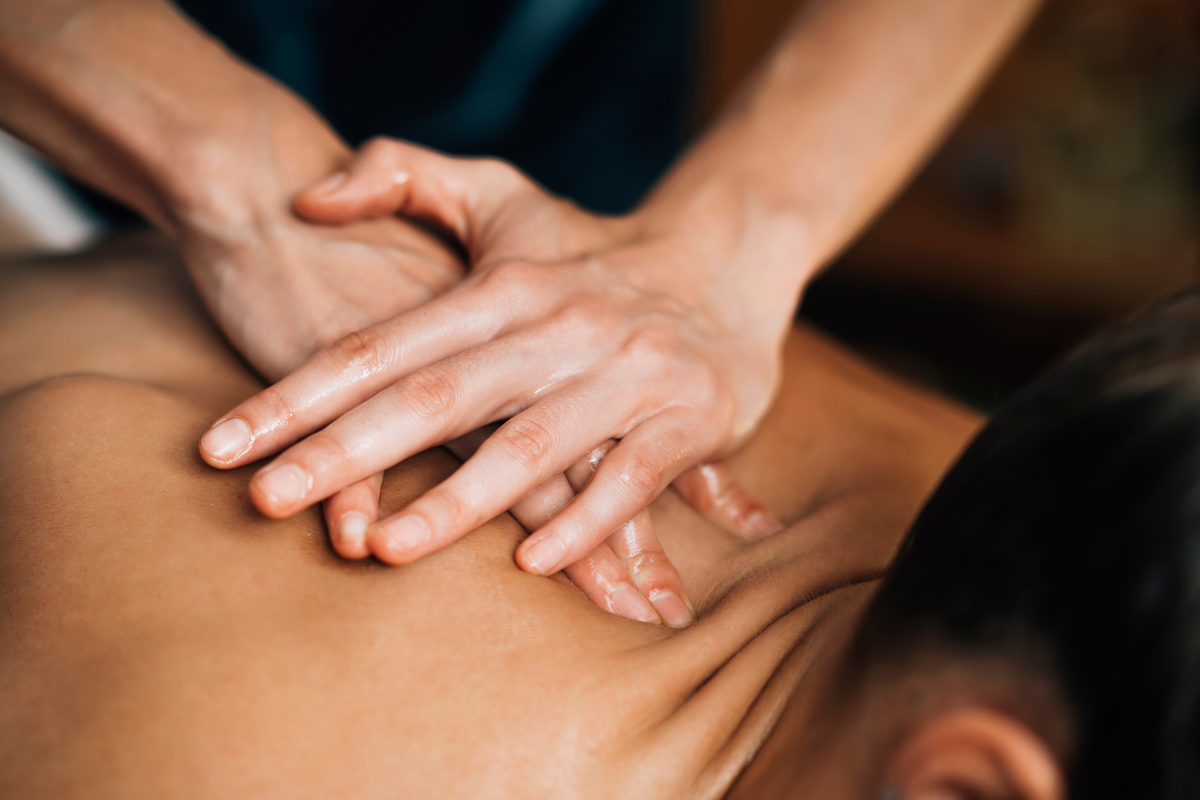If you’re considering a deep tissue massage, it’s essential to understand what it involves and how to prepare for it.
This therapeutic approach targets the deeper layers of your muscles and connective tissues, using slow and sustained pressure to relieve tension, reduce muscle soreness, and improve overall blood circulation.
Knowing how to get ready for your appointment will help your body respond better, and it can enhance the benefits of the treatment.
Before Your Session: Essential Preparations
Hydration: Why It’s Important
Drinking plenty of water before your deep tissue massage treatment helps your muscles remain flexible and responsive, allowing the massage therapist to work more effectively on deep muscle massage techniques. Make sure to drink plenty of water throughout the day leading up to your appointment, but avoid overhydrating right before your session to prevent discomfort.
Continuing to stay hydrated after your massage is equally important. The pressure applied during the session can release toxins trapped in the muscle tissue, so drinking water aids in flushing these toxins out and supports a faster recovery. Proper hydration also reduces the risk of muscle soreness and enhances the overall effects of your massage.
Food Intake: What and When to Eat
Eating the right food before your massage session is another vital step. It’s recommended to avoid heavy meals for at least 1-2 hours before your appointment. A full stomach can make lying on the massage table uncomfortable and might disrupt the blood flow needed during the treatment.
If you need a snack, opt for something light like fruits, nuts, or a small yogurt, which are easy on the digestive system. This ensures you have enough energy for the massage while keeping your body relaxed and ready to receive the benefits of applying sustained pressure on tense areas.

Physical and Mental Preparation
Light Stretching and Warming Up
Before your deep tissue massage therapy, it’s beneficial to engage in light stretching or warming up.
Gentle stretches can help relax the muscle tissue and increase blood circulation, making it easier for the therapist to work on the deeper muscles. Focus on areas like the neck, shoulders, and hamstrings—these are common spots where chronic tension builds up.
Warming up your body also prepares your nervous system for the massage, enhancing your ability to relax and respond positively to the sustained pressure applied during the session. Not only does this practice help improve flexibility, but it also boosts blood flow, ensuring you get the most out of your massage services.
Relaxing and Setting Intentions
Mental preparation is just as important as physical. Arriving with a calm mindset can significantly improve your experience. You can try to practice deep breathing techniques before your session to promote relaxation and lower stress levels. Taking slow, deep breaths helps to settle the body and mind, making it easier to release tension and stress during the massage.
Setting an intention for your massage—whether it’s pain relief, muscle relaxation, or simply stress relief—can also be powerful. Focusing on your goal allows you to stay present and makes it easier to relax deeply during the session, which can lead to a significant decrease in overall tension and stress.
Things to Avoid Before Your Massage
Stimulants: Caffeine, Alcohol, and Nicotine
Its advisable to avoid stimulants such as caffeine, alcohol, and nicotine before your deep tissue massage is important for achieving the best results. These substances can increase stress levels and interfere with the body’s ability to relax, making it harder for the therapist to reach the deeper layers of your muscles effectively. For instance, caffeine can elevate your heart rate, while alcohol and nicotine may affect blood circulation, reducing the efficiency of the massage.
Instead, opt for water or herbal teas to keep yourself hydrated and promote a relaxed state. This helps your body stay receptive to the therapeutic work done during the massage and enhances the effects of the deep strokes and pressure applied.
Getting Ready: Practical Tips
Communicate with Your Massage Therapist
Make sure to inform your therapist about any health conditions you have, such as previous injuries, carpal tunnel syndrome or if you’re currently experiencing chronic muscle tension. Sharing your medical history and any specific pain points will help the therapist tailor the session that will perfectly suit your needs.
Additionally, if you are pregnant, have blood clots, or any other conditions like deep vein thrombosis, it’s crucial to let the therapist know beforehand, as these may affect the techniques used.
A good massage therapists will adapt the pressure and approach to ensure your safety and the best possible results.
What to Bring to Your Massage Session
Essentials for a Smooth Experience
To ensure a smooth and comfortable experience during your deep tissue massage, there are a few essential items you might want to bring. A water bottle is important, as staying hydrated before and after the session helps maintain your body’s natural balance and supports the detoxification process when toxins are released during the massage.
Additionally, if you have sensitive skin or allergies, consider bringing your own massage oils or informing the therapist in advance so they can provide alternatives that are suitable for you. It’s also helpful to have comfortable clothing to change into post-session, as you might want to keep your body relaxed and avoid restrictive clothing that could hinder blood flow.
If this is your first deep tissue massage, don’t hesitate to discuss any concerns or preferences with the therapist beforehand. As we already mentioned, maintaining good communication can make the experience more personalized and ensure that the massage appointment meets your needs.

Aftercare: Maximizing the Benefits of Your Massage
Managing Post-Massage Soreness
It’s normal to experience some soreness after a deep tissue massage, especially if you’ve had chronic tension or scar tissue in the treated areas. To alleviate this, consider taking a warm bath or applying a cold compress to the sore spots. The warmth can relax the muscles further, while the cold helps reduce inflammation.
If you’re still feeling sore, try gentle movements or light exercises like walking. They can help boost blood flow and speed up your recovery.
Maximizing Benefits of Deep Tissue Massages
Proper preparation for a deep tissue massage is important to getting the most out of it and having a comfortable, effective session. Staying hydrated, eating a light meal, and practicing deep breathing can make a big difference in how you feel after the treatment.
So whether you’re working through chronic pain, easing muscle tension, or just seeking some stress relief, make sure to follow these steps and they can help make your massage a more enjoyable and rewarding experience.
Remember, working with a professional massage therapist who understands your needs and preferences is key to achieving the best results.
Ready to experience the benefits of a deep tissue massage?
Now when you know how to prepare for deep tissue massage, schedule your session at Resync and take the next step toward improved well-being and relaxation.



